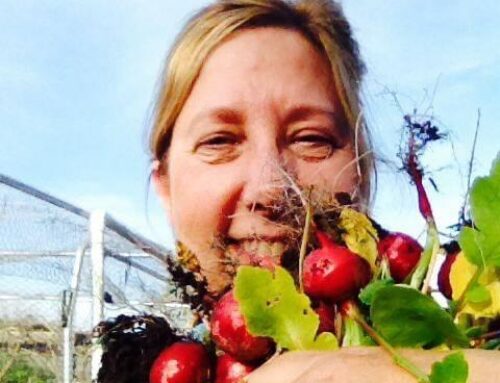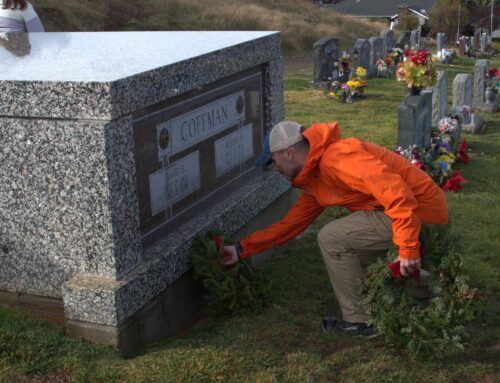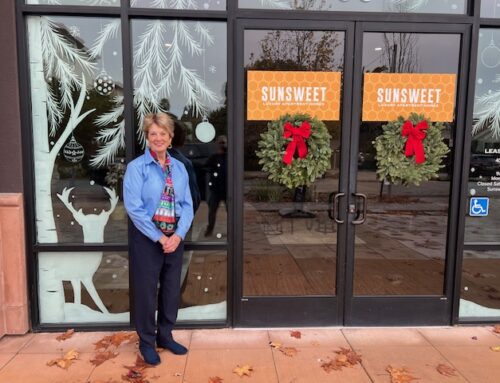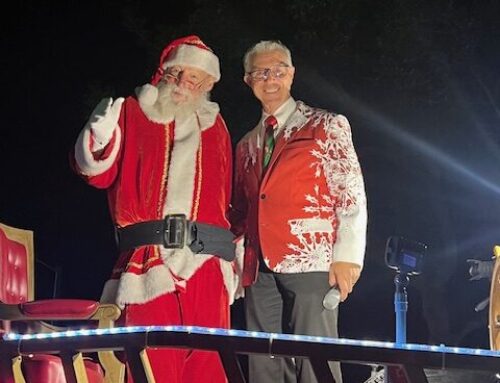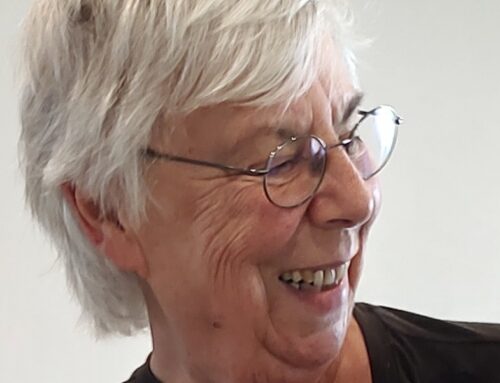Published in the July 20 – Aug. 2, 2016 issue of Morgan Hill Life
By Connor Quinn

Photo courtesy Connor Quinn
Connor Quinn (middle, right) and other students enjoy a meal.
I’ve been lucky enough to travel the world, even living in Germany for a couple of years, although I never gave much effort to learn a new language. I knew enough to get around and order food. And then I joined the Gavilan Community College Spanish language program in Seville, Spain, where I’ve been this summer.
When I left the U.S. Army and returned to California, I knew this was the perfect time to accomplish my goal of learning a foreign language. I chose Spanish because A: California, need I say more? B: last year I went to the running of the bulls in Pamplona, Spain and was embarrassed by how inadequate I was understanding the locals. C: I want to become a wannabe doctor (physician’s assistant) and knowing Spanish will help me help patients.
I don’t expect by the time I leave Spain I’ll be fluent. But after only one week I’m able to somewhat hold a conversation. It’s completely broken, mind you, with a lot of gesturing and me going to my smartphone to pull up my English to Spanish dictionary, but it’s fun and exciting. I know I’m not the only student who’s experiencing this. There’s a general enthusiasm that can be seen on everyone’s face when attending class. For a couple of hours a day we sit in class with a teacher who doesn’t speak English, or they speak very little. This forces the students to adapt.
The second goal is to take in the Spanish culture and experience something new and different. I had been to Spain once, last year, and all it did was create a longing to see and do more. A couple of days is not enough, especially if you enjoy traveling with your stomach. The range of food here is nothing short of amazing. The many tapa bars that line the streets around La Giralda and the hidden gems found in the maze of back alleys in Seville are probably my favorite part. Gavilan College instructor Albert Marques, our “chaperone” on this trip, has taken several of us on these amazing tapa bar hunting trips where we enjoy copious amounts of delicious food shared family style — and many bottles of red wine. His taste for the food and culture of Andalucia make him a perfect guides. He’s also hands off and lets everyone be and act like adults. For many students, the culture shock can be overwhelming. However, I think he’s done a wonderful job letting everyone do what they want with their time here and guiding everyone when asked.
The third reason I wanted to go on this trip was to return to Pamplona and run with the bulls again. It’s hard to describe the feelings of why I’m looking forward to sharing a narrow street with half-ton wild animals. It might be easier to explain it as the sense of camaraderie that comes from risking your life in doing something as stupid as trying to run with a herd of bulls. Truthfully, it’s something that I needed after my time in the Army, to have a group aside from my war buddies that are my kind of crazy.
It truly is a small world as we found out on the first day in Seville. As we are walking through the streets, Albert ran into a Spanish friend who is a famous Flamenco dancer. As we were walking along to the next bar for a nightcap, I look over and see someone I think I recognize. I nudged Albert. “This is going to trip you out. Alexander!” On the opposite side of the street was my friend from Pamplona. Alexander Fiske-Harrison is a writer by trade but in my opinion, an excellent candidate for “most interesting man in the world.” He’s been a bullfighter, war journalist, bull runner, and is currently conducting research on wolves.
I was lucky enough to convince him to attend a bullfight in Spain. For those who’ve never been to a bullfight, it is an intensely emotional experience. I’m a meat eater and a hunter, I also identify as an animal lover. I’m sure to some that sounds hypocritical. But I go to remind myself of the cost of what goes on my plate. The corrida is death as an art form, a dance between a matador and the bull a mortal baille. There are moments of pride and pity for the bull. It’s pride in the ferocity and will to live demonstrated in its charge, and pity with every injury dealt to the animal. It’s a beautiful tragedy to watch, horrible in its necessity. In these moments, Alexander likes to point out that the fighting bulls are raised free and pay for that freedom in the arena.
While I chose the gorier side of Spanish culture, other students took advantage of our coastal proximity and decided to visit the nearby beaches in Cadiz. Most of them came back sunburned. Despite that inconvenience, I’m sure they all enjoyed it. Others went to Cordoba just north of Seville.
It’s important to note how different the days are in Spain. Sunrise is about 6 a.m. and sunset about 10 p.m. This makes for a long day and the reason for one of my favorite Spanish customs — the siesta. An hour or more nap after class is necessary to just simply make it to dinner time. Most of the restaurants I’ve been to don’t even open up until 9 p.m. So remember if you ever travel to Spain, naps are a must.
Connor Quinn is a local veteran studying abroad. He wrote this for Morgan Hill Life. We will publish the second part of this column in our next issue.


